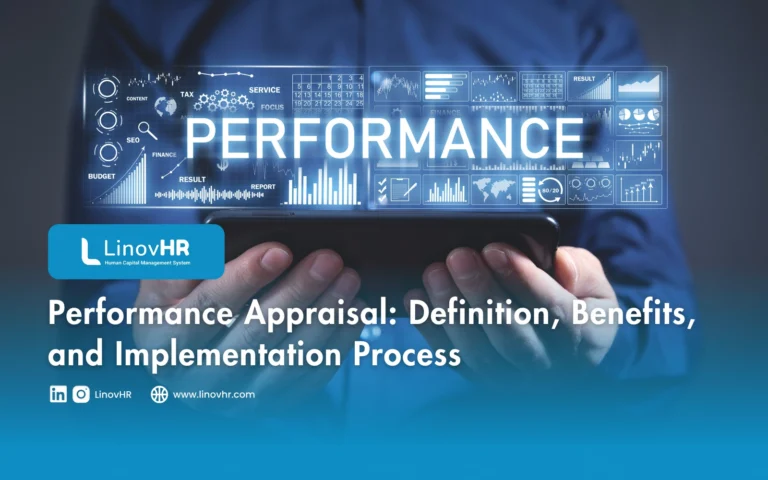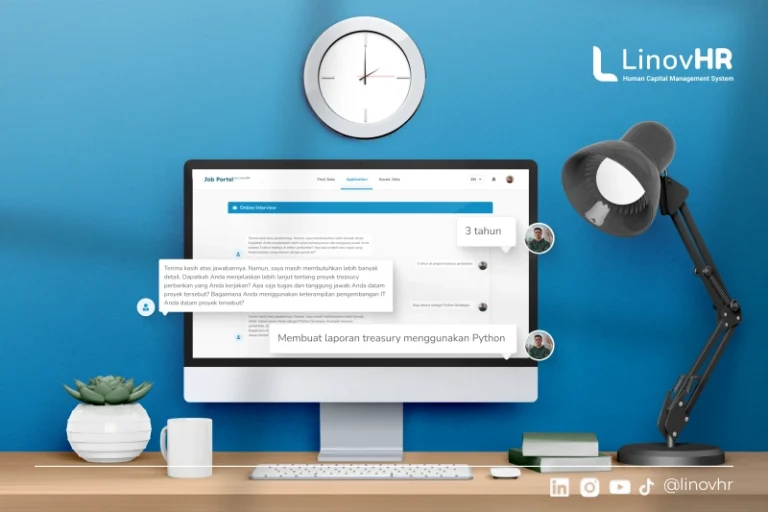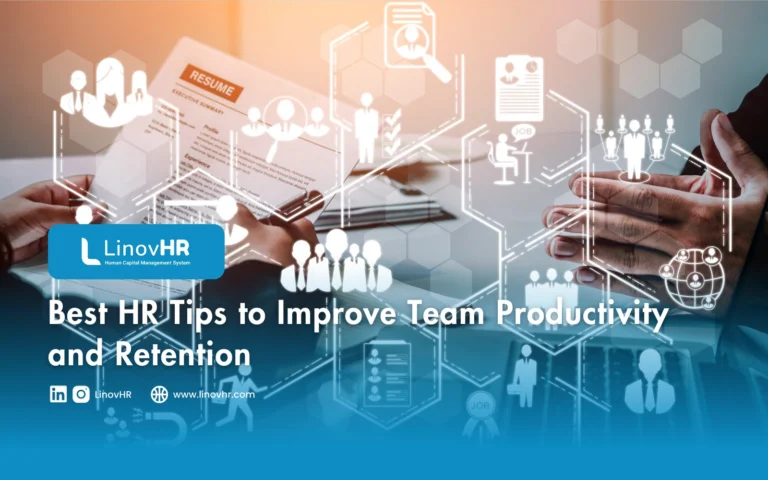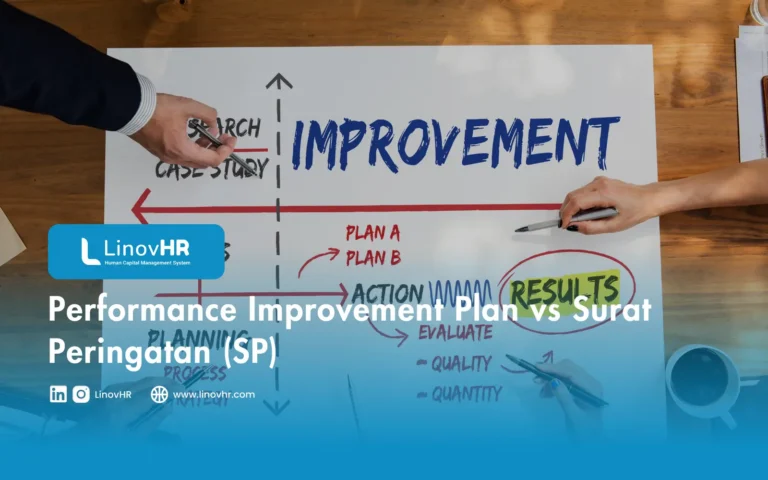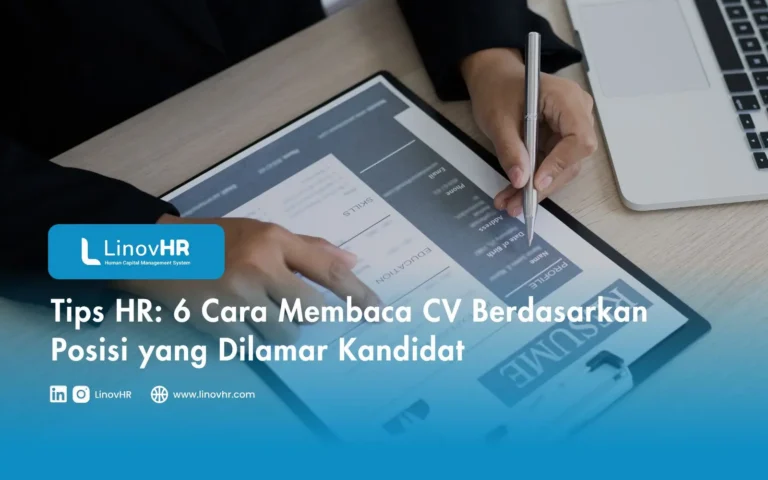Employee performance evaluation is one of the key factors in an organization’s success. Through an objective and measurable assessment process, companies can ensure that every individual’s contribution aligns with business objectives.
This is where performance appraisal plays an essential role, not only to evaluate performance but also to develop each employee’s full potential.
What Is a Performance Appraisal?
A performance appraisal is a systematic process used to evaluate how well an employee has achieved their work targets and responsibilities within a specific period.
Typically, this process is conducted by a direct supervisor or HR manager based on predetermined indicators
Beyond assessing outcomes, performance appraisal helps organizations understand employee competencies, behaviors, and development needs. With these insights, HR can design more effective training, promotion, and compensation strategies.
In today’s competitive business landscape, companies must ensure every employee contributes optimally to organizational goals. Performance appraisals help achieve this by providing a data-driven basis for decision making.
Moreover, they strengthen a culture of open feedback, build trust between employees and management, and boost motivation as achievements are recognized objectively.
Benefits of Performance Appraisal for Employee Performance
Before understanding how to implement performance appraisals effectively, it’s important to see the various benefits they offer to both companies and individuals.
1. Boosting Productivity and Employee Motivation
With clear and structured evaluations, employees can better understand what is expected of them. Constructive feedback encourages them to address weaknesses and maintain strong performance, directly improving overall team productivity.
2. Providing a Basis for HR Decision-Making
Performance appraisal data can serve as a reference for decisions regarding promotions, bonuses, and succession planning. This ensures that HR decisions are made based on objective performance results rather than subjective impressions.
3. Encouraging Competency and Career Development
Appraisal results clearly identify skill gaps and development areas. HR can use this information to design relevant training programs, enabling employees to grow in alignment with organizational needs.
4. Strengthening Employee Engagement and Loyalty
Employees who feel heard and recognized tend to have higher engagement levels. Fair and transparent performance appraisals foster a sense of trust and belonging within the organization.
Methods and Process of Conducting Performance Appraisals
For performance appraisals to be effective, organizations need to apply the right methods and follow a systematic process. With the proper approach, results can be used not only for evaluation but also as a foundation for long-term human resource development strategies.
Common Methods in Performance Appraisal
Here are several commonly used methods for assessing employee performance:
- Rating Scale
This method uses numerical scales, such as 1-5 or 1-10, to evaluate aspects like work quality, timeliness, initiative, and teamwork.
Advantages: Easy to implement and produces quick results.
Disadvantages: Effectiveness depends on having clear, objective indicators to minimize subjectivity.
- 360-Degree Feedback
This method gathers feedback from multiple sources, supervisors, peers, subordinates, and even clients.
Advantages: Provides a holistic view or employee behavior and contribution while encouraging a culture of open collaborative feedback.
Disadvantages: Time-consuming and may involve conflicting feedback if not well-structured.
- Management by Objectives (MBO)
In this approach, employees and supervisors collaboratively set specific, measurable goals to be achieved within a defined period. Performance is then evaluated based on how actual results compare to these goals.
Advantages: Encourage accountability and motivation by involving employees in goal-setting.
Disadvantages: May overlook qualitative aspects such as behavior and teamwork.
- Behaviorally Anchored Rating Scale (BARS)
This method combines rating scale with concrete behavioral examples for each performance level. For instance, a score of “5” might indicate “always meets deadlines ahead of time,” while a “3” could mean “occasionally misses deadlines.”
Advantages: Reduces subjectivity and provides clearer, behavior-based evaluations.
Disadvantages: Requires more preparation time to define behavioral anchors accurately.
Stages of the Performance Appraisal Process
In addition to method selection, the success of an appraisal process depends on its systematic and consistent execution. The following steps can serve as a guide for HR and managers:
1. Define Objectives and Evaluation Criteria
The first step is to determine the purpose of the appraisal, whether it’s for performance evaluation, promotion, or career development.
HR should then establish relevant indicators for each position, such as Key Performance Indicators (KPIs) focused on results and Key Behavior Indicators (KBIs) focused on work behaviors.
2. Collect Performance Data and Observations
Data collection should occur throughout the work period, not just before appraisal time. The supervisor should record data on productivity, work quality, and contributions to team goals.
Some organizations use the HRIS system to automate data collection for greater accuracy and transparency.
3. Conduct Evaluation and Feedback Discussions
This stage represents the core of the appraisal process. After data collection, HR or supervisors evaluate performance based on established criteria.
The results are then discussed with employees in feedback sessions. During these discussions, it’s crucial to deliver constructive feedback, not only addressing weaknesses but also providing support and actionable steps for improvement.
4. Follow Up on Appraisal Results
The appraisal should not end with scores or ratings. Instead, results should inform HR planning and development initiatives.
HR can use the findings to design training programs, plan promotions, or determine fair compensation. This stage also helps identify high-potential employees for future leadership roles.
Common Mistakes in Performance Appraisals
Despite its benefits, performance appraisals often fail to deliver results due to several common mistakes made by HR or managers.
1. Subjective Evaluation
When assessments rely more on personal opinions than on objective data, results become unreliable. Organizations should use measurable indicators and digital systems to minimize bias.
2. Lack of Communication and Feedback
Performance appraisals are not just about numbers or scores, they are about dialogue. Without clear and constructive feedback, employees won’t know how to improve their performance.
3. No Follow-Up Actions
Appraisals lose their value if no follow-up actions are taken. HR must ensure that appraisal results lead to relevant training and career development initiatives
Also read: Best Appraisal Software 2025: Definition, Features, and Top Recommendations
Maximize Performance Appraisal Efficiency with LinovHR
Managing performance appraisals manually can be time-consuming and error-prone. To ensure an efficient and objective process, companies can leverage the Performance Management module from LinovHR.
LinovHR’s HRIS software automates the entire appraisal process, from setting KPIs and collecting performance data to generating real-time evaluation reports.
Additionally, integration with the Succession Management and Learning Management System (LMS) modules enables HR to map employee potential and design development programs based on appraisal outcomes.
Request a free demo today and discover how LinovHR can help your organization enhance performance evaluation efficiency and employee engagement!


